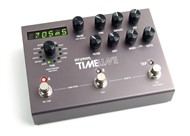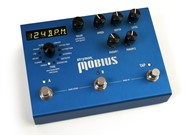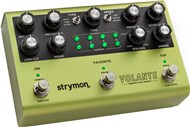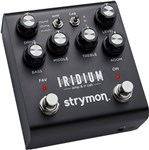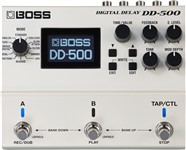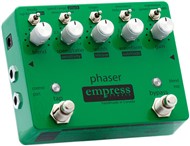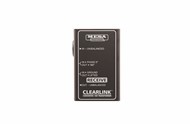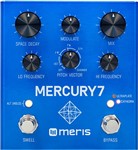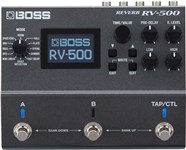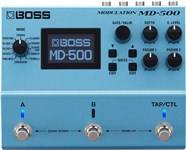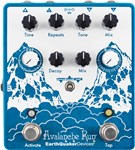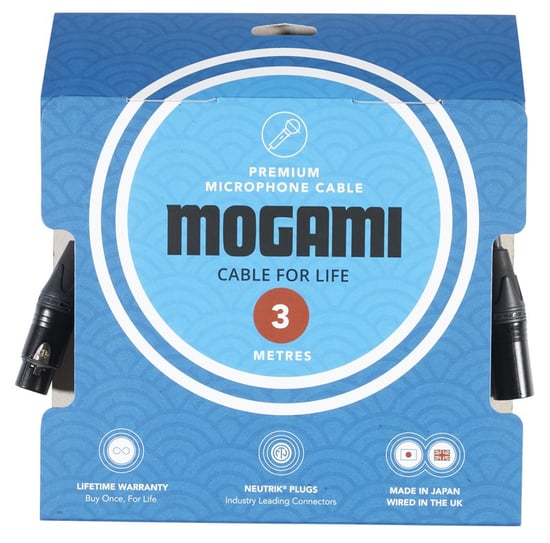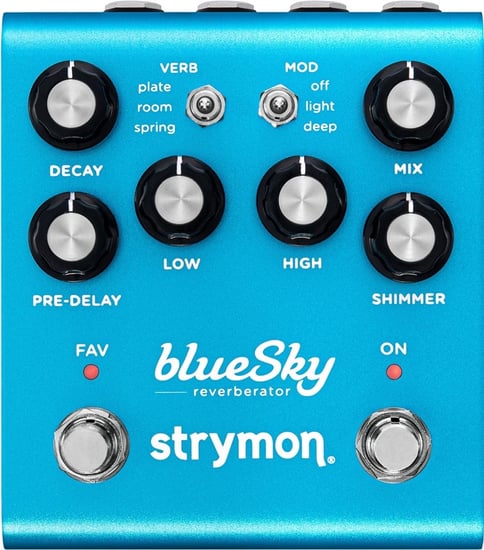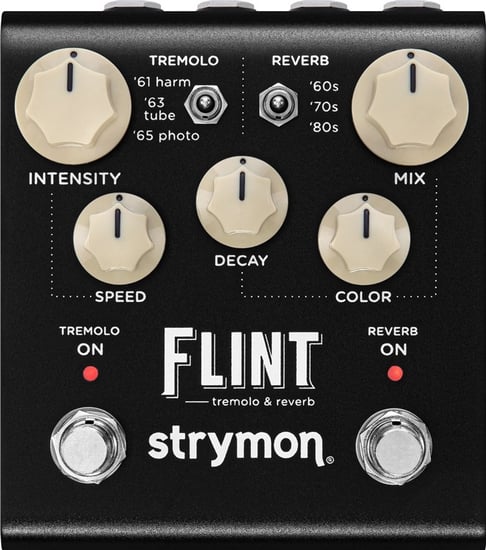Strymon DIG Dual Digital Delay Pedal V2 Overview
The second-generation of the powerful dual digital delay authentically delivers classic '80s rackmount effects and boasts brand new features for even greater tonal flexibility.
Rack-mount digital delays of the ’80s ushered in a new era of audio effects. The innovative electronic designs generated the cleanest delays that had yet been heard but also created their own special and intriguing sonic characteristics. Thirty-plus years later, these sounds remain as distinctive and inspiring as ever.
Strymon’s thorough investigation of digital delay technology reveals the unique personalities that these delays possess. Delve into DIG’s three digital delay voicings: the early ’80s adaptive delta modulation mode, the mid-’80s 12-bit pulse code modulation mode, and the modern high-resolution 24/96 mode. Multiply these distinct voicings by two and get DIG — your perfect dual delay ally.
What’s new in DIG version 2?
The second generation of the Strymon DIG dual digital delay keeps the same distinctive rack-mount digital delay tones from the original and adds significant new features, incorporating technological advancements, hardware improvements and design enhancements to give you additional flexibility, power, and ease of use on stage and in the studio.
Tone Knob
This powerful control sets the feedback filter response for tailoring the sound of your echoes. Fast and intuitive to use, it is actually two filters on one control: Turn left for high cut and right for low cut, or set at 12 o’clock for a flat response.
Hardware Improvements
A premium analogue JFET input circuit ensures superb responsiveness to your playing, and you can select mono or stereo input with the flick of a rear-panel switch. All this, plus a new ARM DSP chip provides more processing power for every sonic nuance, with less energy consumption on your pedalboard.
MIDI
Full MIDI implementation means you can control just about every switch, knob, and setting remotely by sending MIDI commands from your controller or DAW via DIG’s EXP/MIDI jack or USB-C connection. Delay time can be synchronized via MIDI Clock Sync, and the sync setting can be saved for each preset. 300 MIDI preset locations are available for loading and saving your favourite settings.
Voices Of Digital.
ADM – A one-bit, high sample rate conversion technique that evolved from telecommunications voice coding. The conversion and supporting signal conditioning, limiting, and pre-emphasis/deemphasis create a percussive wide-band delay that adds more character when input dynamics increase.
12 bit – A 12-bit, 32kHz PCM conversion made possible by monolithic IC chips developed in the late ’70s. Pre-emphasis/de-emphasis and companding combine with the converters to produce a warm delay with a dimensional sense.
24/96 – A clean, high-resolution, high-bandwidth delay with a hint of dynamics that allow the delay to sit nicely with the analogue dry signal. 24-bit resolution and a 96kHz sampling rate ensure uncoloured, artifact-free repeats.
Two-For-One Special.
At the heart of DIG are two simultaneous, integrated delay machines. Delay 1 is the master delay — Its free-running delay time allows you to easily dial in delays from 20ms to 1.6s with the Time knob or Tap Tempo switch. Longer delay times lend themselves to more ambient soundscapes while doubling and slapback effects can be achieved at short delay times.
Delay 2 follows as the companion delay. A dedicated subdivision control determines the ratio between the two delays with one of five rhythmic subdivisions: triplet, eighth note, dotted eighth note, dotted quarter note, and the golden ratio.
Don’t want your delays to be synchronized? DIG’s Free Mode secondary function disables time sync and subdivisions between Delay 1 and Delay 2, giving the Time 2 knob a full delay range from 20ms to 1.6s. This lets you use both of DIG’s delays as truly independent, standalone delay machines.
If you want the sound of iconic '80s rackmount delays on your pedalboard or in your studio, the second-gen version of the Strymon DIG dual delay offers that tone with an astonishing level of tone-shaping possibilities.
- Two simultaneous delays + unique digital rack delay voicings (20ms-1.6s range/40ms-3.2s w Half Note Delay/1 Subdivision)
- Five dual delay adjustment and tone shaping knobs: Time, Time 2, Mix, Mix 2, Repeats
- One modern and two classic digital delay voicings: 24/96, adm, 12 bit
- 5 subdvns: Triplet, Eighth, Golden Ratio, Dotted Eighth, Dotted Quarter and 3 choices for delay modulation: Off/Light/Deep
- 5 “hidden” knobs for deep dual delay control: Delay 1 Subdivision, Sync/Free Mode, Filter, Config, Delay 2 Repeats
- Selectable Free Mode disables subdivisions and synchronization
- Press and hold Circular Repeats effect
- Three signal routing configurations: Series, Parallel, Ping Pong
- Ultra low noise 24-bit 96kHz converters, 115dB typical SNR
- TRS stereo input (with stunning new JFET preamp) and output, plus MONO/STEREO input switch on the back of the unit
- Full MIDI control, MIDI clock sync and 300 presets
- USB port for updates and MIDI over USB
- TRS MIDI jacks: bi-directional MIDI communication with a single cable using the Conduit interface
- Editor/librarian support via USB
- High impedance ultra low-noise discrete Class A JFET TRS stereo input.
- Low impedance independent TS stereo outputs.
- Expression pedal input allows the connection of a TRS expression pedal, MiniSwitch, MultiSwitch Plus, or TRS MIDI connection.
- USB jack for controlling via MIDI from a computer or for performing firmware updates.
- Dedicated Tap Tempo & On/Off footswitches
- Premium JFET analog front end
- Ultra low noise, high performance 24-bit 96kHz A/D and D/A converters provide uncompromising audio quality
- 520MHz ARM Superscalar processor
- 32-bit floating point processing
- 20Hz to 20kHz frequency response
- Audio Input Impedance: 1M Ohm
- Audio Output Impedance: 100 Ohm
- Strong and lightweight pink aluminum chassis
- 9V DC power supply included
- Power requirements: maximum 9 volts DC center-negative, with a minimum of 300mA of current
- Dimensions: 4.5” deep x 4” wide x 1.75” tall / 11.4 cm deep x 10.2 cm wide x 4.4 cm tall
- Designed and built in the USA









